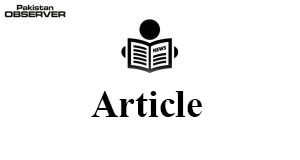Education: Unfulfilled promises
August marks a month of both celebration and reflection; celebration of our independence and reflection on what we have achieved so far as a nation.
Education has a central value in the development of any country as every aspect of human life is impacted by the overarching role that education plays.
However, in 74 years of its existence, Pakistan has struggled to ascribe the level of significance and priority to education that it deserves in the process of nation building.
Pakistan is a known low-spender on education among regional territories. According to the budget data made public by finance division, Pakistan plans to spend PKR 83.3 billion on education affairs and services in 2020/2021 depicting a slight increase from the revised budget of PKR 81.2 billion from the previous year.
This year’s education budget once again falls short of the international commitment of 4% if considered in terms of expenditure as a percentage to GDP.
As per Economic Survey 2021 the government has significantly reduced the actual expenditure on education for the fiscal year 2019-2020 bringing it down to 1.5 against the former value of 2.3 in terms of percentage of GDP.
This is alarming because Pakistan has an estimated 22.8 million children aged 5-16 out of school.
Due to COVID, as per World Bank’s recent estimates an additional one million children have dropped out of schools, majority of them being girls.
According to United Nations Development Program, Pakistan is ranked 152 out of 189 countries having not demonstrated any progress in key educational indicators such as literacy rate, gross enrolment ratio, and expenditure on education, as compared to the adjoining regional territories.
Another concern is the huge gap between the funds earmarked within the education budget for development and non-development expenditure.
During the current fiscal year, the federal area has the most rationalized division of funds between development and non-development education expenses but even then, 66 percent of the federal education budget is servicing non-development expenses.
This percentage stands at 90 percent for Sindh and 88 percent for both Punjab and Khyber Pakhtunkhwa.
It is also important to ensure that unspent development funds are not allowed to lapse and are carried forward into the next fiscal year for effective completion of education development initiatives.
Global education summit held in London on July 28-29 gathered the leadership on education, donors and civil society from all around the world in one place to refresh their pledges commitments on increasing financing for quality education for all children.
At the summit, the world leaders made 5-year pledges to support and transform education system in their respective countries.
Pakistan was represented by officials from the Federal, Sindh, Balochistan and Khyber Pakhtunkhwa governments.
Provincial and federal ministers made commitments towards increasing the existing expenditure on education as a share of total budget up to 20% of education spending.
Other policy commitments vary from government to government but majority of them address the issues related to infrastructure, gender disparity, out of school children particularly girls and technological integration et al.
Despite various commitments, the progress on implementation of Article 25-A, Sustainable Development Goal four and Ehsaas education component — after 11 years, six years and two years respectively — remains extremely slow.
Hence the major issue is lack of holistic and inclusive interpretation of the existing policy frameworks in general, and effective implementation in particular.
For a motivated, civilized and prosperous nation, we need a strong education system that is accessible to all with an inclusive, transparent and open policy processes backed by sufficient credible data. Pakistan Zindabad
—The writer is a policy analyst and campaigner for education.










